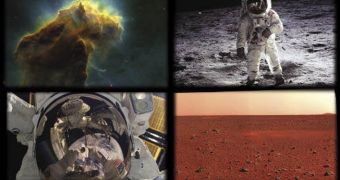Most of us have been using a technology originally developed for space for many years, without even realizing it. One in three mobile phones on the market today features camera technologies that were originally developed to bring the most distant galaxies in the Universe into our lives.
The same cameras were used during the Apollo Moon landings to image Neil Armstrong and Buzz Aldrin as they were taking the first steps on the lunar surface, or to capture images of the most distant galaxies and nebulae.
Such technologies were also used to bring the Martian plains to life, when they were installed on rovers and landers destined to reach the surface of the Red Planet. In short, our current understanding of the solar system and indeed the Universe, is largely owed to these cameras.
Though the Eastman Kodak company is credited with building the first digital camera back in 1975, the concept actually dates back to the 1960s, when it was first proposed by NASA Jet Propulsion Laboratory (JPL) expert Eugene Lally.
The investigator was analyzing possible methods of using photosensors organized into mosaics, or arrays, to turn light signals reaching them into digital signals that could then be transformed into still images of the light source.
One of the hardest challenges that NASA had to face over the following decades of research in this field was making the sensors smaller, more lightweight, and more resilient to the harsh conditions of a rocket launch, and working in outer space.
Each image sensors contains large number of pixels, which are photodetectors called picture elements. Frederic Billingsley, an engineer at JPL, was the first to publish a paper containing this term, back in 1965. A pixel basically converts photons into electrons.
JPL expert Eric Fossum also contributed to improving digital photography in the 1990s, when his team contributed to improving complementary metal-oxide semiconductor image sensors (CMOS), which are now produced in the same way as microprocessors are.
This ease-of-manufacture is what allowed for this technology to become so widespread and to be used in personal cameras, mobile phones, tablet computers, laptops and dental radiography machines.
Because of the sensors NASA and JPL help pioneer, modern-day cameras are now capable of advanced features such as tilt, zoom, electronic pan, motion detection, target tracking and image compression, Space reports.

 14 DAY TRIAL //
14 DAY TRIAL //